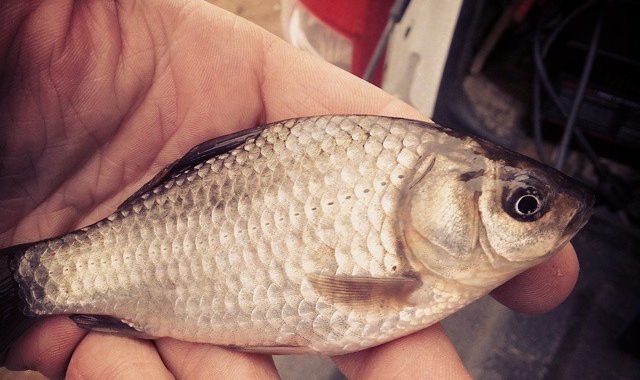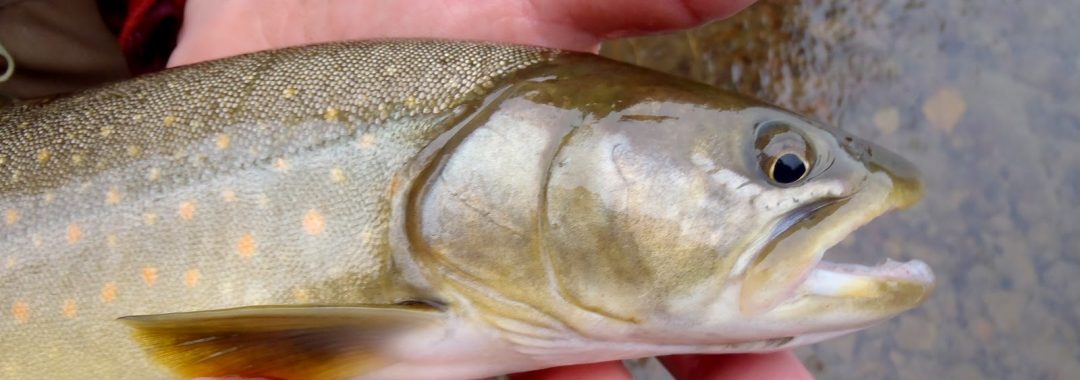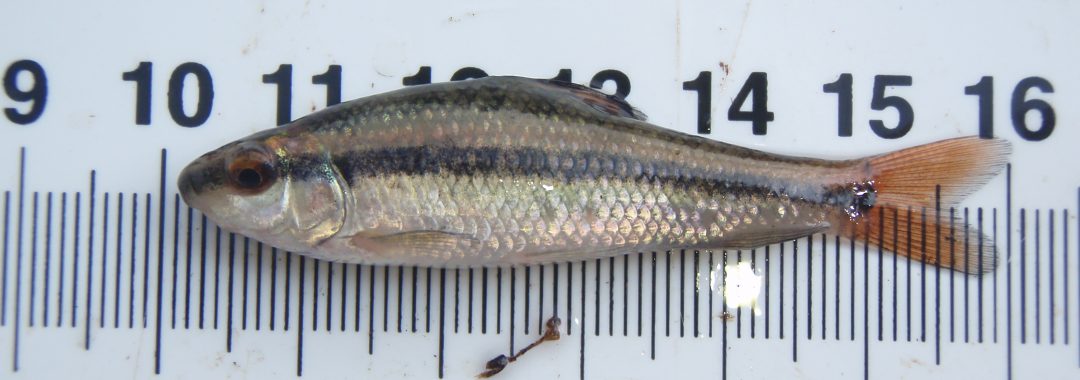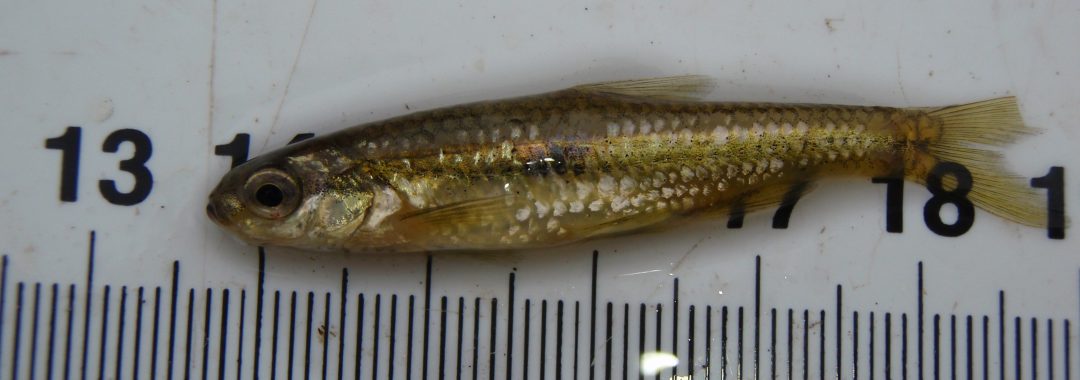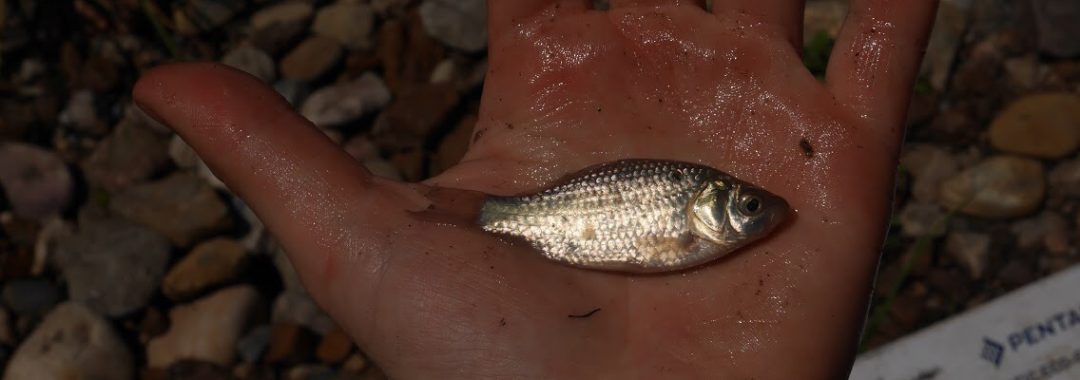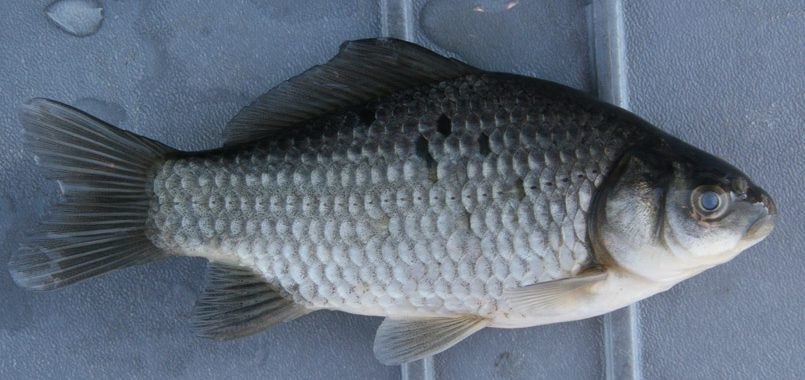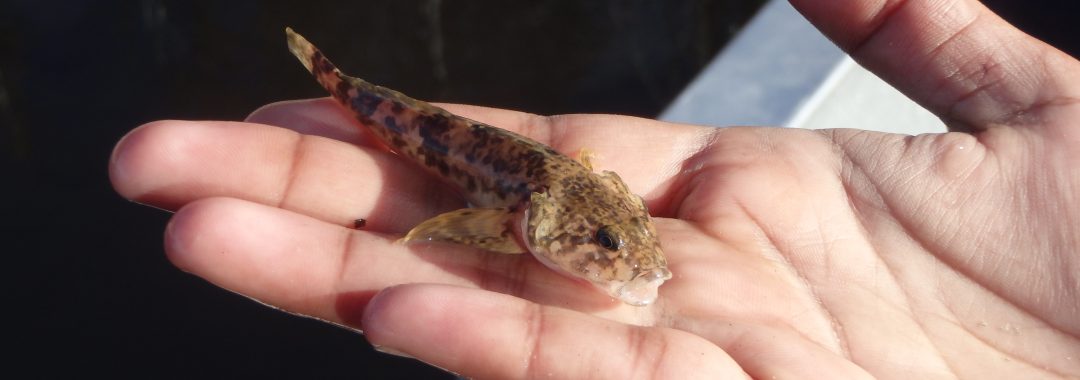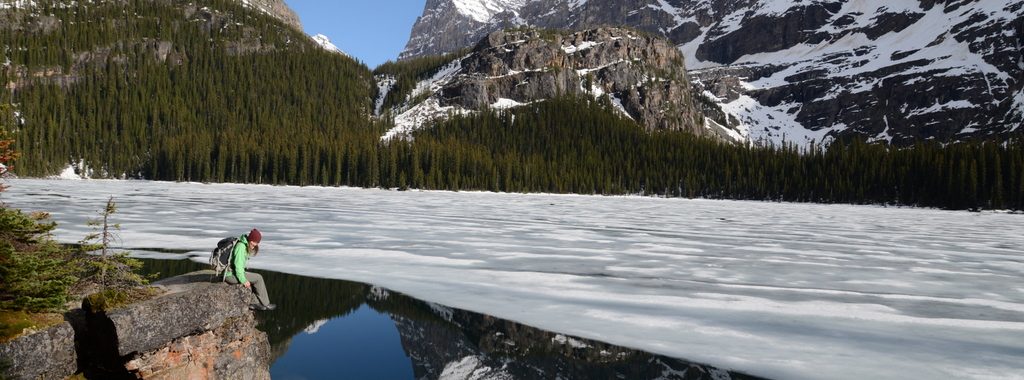Four members of the Fisheries and Aquatic Conservation Lab attended the Canadian Section of The Wildlife Society meeting in Canmore AB. Michael Terry gave a presentation, while Karling Roberts, Sebastian Theis and Taylor Lund gave poster presentations. Great job team!
Category Archives: Conservation of Freshwater Fishes
Freshwater fishes are among the most imperiled groups globally with rates of decline comparable to declines in tropical rainforest species. Research in the PoeschLab focuses on developing a better understanding of the mechanisms for the decline of freshwater organisms. This research has four main themes, including: 1) threats to freshwater species at risk, 2) stream augmentation and hydrologic alteration, 3) climate change impacts to freshwater fishes, and 4) the spread and impact of invasive species. To achieve our research goals we utilize a variety of expertise in the PoeschLab and the University of Alberta. This includes expertise in: movement ecology and telemetry, assessing foodwebs using stable isotope analysis, population genetics and environmental DNA (eDNA) and morphology and swim performance.
Dr. Poesch gives presentation on impacts of Prussian Carp to freshwater fishes at the Alberta Invasive Species Council meeting in LaCombe, AB.
Thanks to the Alberta Invasive Species Council for the invitation to present some of our research and to discuss Prussian Carp more broadly!
The Fisheries and Aquatic Conservation Lab attends the Canadian Science Advisory Meeting on Offsetting in Ottawa
Dr. Poesch, Karling Roberts and Sebatian Theis joined the Canadian Science Advisory Meeting on Offsetting in Ottawa. Thanks to Fisheries and Oceans Canada and all the participants for a great meeting!
The Fisheries and Aquatic Conservation Lab attends the Canadian Freshwater Species at Risk Research Network Workshop in Burlington, Ontario
Dr. Poesch and Taylor MacLeod joined the Canadian Freshwater Species at Risk Network Workshop in Burlington, Ontario. Thanks to Fisheries and Oceans Canada and all the participants for a great meeting! Freshwater species at risk research is growing!!!
Dr. Poesch attends Canadian Science Advisory Meeting on Allowable Harm for Species at Risk
Dr. Poesch provided science advice on determining allowable harm for species at risk in Ottawa, Ontario.
Measuring Prussian Carp with a cup of water (Magazine: Renew)
PoeschLab research on eDNA on Prussian Carp highlighted in Renew Magazine.
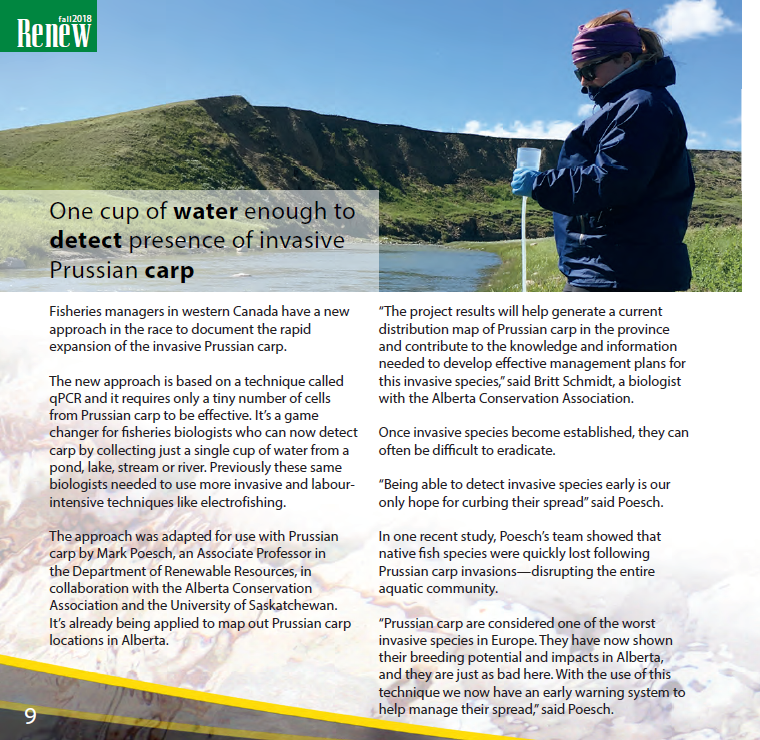
How to deal with this self-cloning invasive carp (Magazine: Cottage Life)
PoeschLab member Jesse Shirton interviewed on our research on Prussian Carp. Link to article: ‘Cottage Life’
Also Read:
Rudolfsen, T.*, Ruppert, J.W.R.*, Davis, C., Taylor, R., Watkinson, D. and M.S. Poesch (2019) Habitat use and hybridization between the Rocky Mountain Sculpin (Cottus sp.) and Slimy Sculpin (Cottus cognatus). Freshwater Biology 64(3): 391-404.
Abstract:
Anthropogenic factors such as land-use change, pollution and climate change, can cause fragmentation and reduce the amount of habitat by altering preferred conditions. This process can also bring about novel species interactions and, in some cases, create or alter levels of hybridization between closely related species. We assessed the threat of hybridization to persistence of the Rocky Mountain Sculpin (Cottus sp.) and the Slimy Sculpin (Cottus cognatus) in the Flathead River drainage, British Columbia, Canada. Using 731 genetic samples, 10 polymorphic microsatellite loci and mitochondrial cytochrome C oxidase sequences, we assessed: (1) if there are differences in the distribution of Rocky Mountain Sculpin between contemporary and historical (35 years ago) records, (2) if hybridization is symmetrical in terms of sex specific parental contributions, and (3) if habitat preferences contribute to the distribution of pure parental and hybrid populations. We identified three hybrid locations and found that Rocky Mountain Sculpin have a distribution (1200 – 1902 m) that far exceeds the range limit reported 35 years ago (1200 – 1372 m). Additionally, hybrid mating appears to involve similar proportions of parents of both sexes from each species. Lastly, elevation, water conductivity, turbidity, and dissolved oxygen are significant factors predicting the presence of parental species. Only elevation was significant to hybrid presence. The contrasting associations of parental species with different habitat types appears to influence the extent and distribution of hybridization.
Citation: Rudolfsen, T.*, Ruppert, J.W.R.*, Davis, C., Taylor, R., Watkinson, D. and M.S. Poesch (2019) Habitat use and hybridization between the Rocky Mountain Sculpin (Cottus sp.) and Slimy Sculpin (Cottus cognatus). Freshwater Biology 64(3): 391-404.
Also Read:
*Lab members: Tyana Rudolfsen, Jonathan Ruppert, Mark Poesch. Check out opportunities in the lab!
Banting, A. L. K. (2018) Impacts of a novel predator on aquatic invertebrates in fishless lakes: Implications for conservation translocation
Thesis Title: Impacts of a novel predator on aquatic invertebrates in fishless lakes: Implications for conservation translocation
Author: Allison L.K. Banting
Abstract
Fishless mountain lakes hold important ecological and conservation value. As such, managers are establishing conservation goals (e.g., non-native fish removal) to restore the naturalness to many of these lakes. Simultaneously, managers who are recovering native (coldwater) fish populations threatened by climate change (e.g., Westslope Cutthroat Trout, Oncorhynchus clarki lewisi and Bull Trout, Salvelinus confluentus) are exploring conservation strategies involving the intentional translocation of native fish species to more suitable areas. These areas include unoccupied, or naturally fishless, stream and lake habitat within their native range or favorable habitats outside their native range. This action presents a potential threat for fishless mountain lakes as conservation managers view these as recovery habitat for imperiled native fish species. The purpose of my study was to inform native fish recovery efforts by assessing the potential consequences of translocating native fishes to naturally fishless lakes, thus outside their historic distribution. Forty alpine and sub-alpine lakes in Banff National Park, Alberta and Kootenay National Park, British Columbia were sampled and divided into three lake types, including 13 naturally fishless lakes, 13 native fish-bearing or native fish-stocked lakes, and 14 non-native fish-stocked lakes historically unoccupied by fish. Littoral invertebrate community composition, density and diversity were examined among lake types to 1) quantify the impacts of introducing non-native fishes into historically fishless lakes, and 2) quantify the differences between native fish lakes and naturally fishless lakes. These comparisons provided context for the scale of impact between two predators of different geographic origins (native vs. non-native) introduced to fishless lakes. The variation in environmental gradients amoung lake types was controlled for, suggesting fish presence strongly influenced changes to invertebrate community density and composition. Native and non-native fishes have the capacity to similarly alter littoral invertebrate community composition of fishless lakes, yet non-native fishes appear to have the greatest impact on littoral invertebrate density. Although impacts vary between native and non-native predators, the introduction of any novel fish predator to a fishless lake will result in a negative impact to key littoral macroinvertebrates, such as Gammaridae, Ephemoptera and Plecoptera, and a positive impact to burrowing taxa, such as Oligochaeta, Nemata and Chironomidae. While the introduction of non-native fishes has been repeatedly shown to affect invertebrate communities, the translocation of native fishes similarly has the potential to alter the ecology of a naturally fishless lake. With considerations for possible aquatic-terrestrial cross boundary effects, this study suggests that conservation ecologists consider the entire ecosystem when building resilience for climate change.
Medinski, N. (2018) Assessing the impacts of multiple ecological stressors on an endangered native salmonid, the Athabasca Rainbow Trout, in the foothills of the Canadian Rocky Mountains.
Thesis Title: Assessing the impacts of multiple ecological stressors on an endangered native salmonid, the Athabasca Rainbow Trout, in the foothills of the Canadian Rocky Mountains.
Author: Nathan Medinski
Abstract
Freshwater fish face a multitude of ecological stressors, which has resulted in substantial declines in aquatic biodiversity. The loss of aquatic biodiversity can lead to changes in ecosystem function, productivity and food web dynamics. One such imperiled freshwater fish is the Athabasca Rainbow Trout (Oncorhynchus mykiss), a unique Rainbow Trout ecotype found in the upper reaches of the Athabasca River watershed, forming the only native Rainbow Trout population in Alberta. Athabasca Rainbow Trout have experienced widespread declines in abundance, with losses of approximately 90% over the last three generation, or approximately 15 years. Two of the main ecological stressors impacting Athabasca Rainbow Trout are competition with invasive Brook Trout (Salvelinus fontinalis) and habitat degradation associated with natural resource extraction developments in the region. For example, in 2013 the accidental breach of a tailings dam at the Obed coal mine near Hinton, Alberta, Canada, released 670,000 m3 of coal tailings material into Athabasca Rainbow Trout habitat. My goal in this thesis was to improve our understanding of ongoing impacts from multiple ecological stressors on Athabasca Rainbow Trout abundance and food resource use, inferred from sampling seven streams in the upper Athabasca River watershed. The specific objectives of this thesis were therefore to: 1) determine how this ecological stressor gradient has influenced Athabasca Rainbow Trout abundance in the foothills of west-central Alberta, and 2) understand how food resource utilization by Athabasca Rainbow Trout populations has been affected along a disturbance gradient associated with habitat degradation from the Obed mine tailings release and competition with invasive Brook Trout.
To meet my first study objective, I compared Rainbow Trout abundance with metrics associated with mining impacts to aquatic systems, landscape level stressors, abundance of invasive species and general stream habitat parameters between waterbodies along a gradient of ecological stressors. I determined that Athabasca Rainbow Trout abundance was not significantly different between groupings of streams impacted by the Obed mine tailings release compared with reference streams but was lowest in streams that were both highly turbid and had high abundance of invasive Brook Trout. To answer my second study objective, I used stable isotope analysis to determine trophic position, carbon source pathways, diet composition, niche width and resource use overlap to infer if food resource use changed along a disturbance gradient. I found that Athabasca Rainbow Trout in tailings disturbed waterbodies were utilizing a wider breadth of dietary resources and had substantially higher niche overlap with Brook Trout than in waterbodies not impacted by the tailings release, indicative of greater competition for food resources.
This thesis contributes to our understanding of how endangered Athabasca Rainbow Trout populations have been impacted by multiple ecological stressors and quantifies important interactions between these stressors with fish abundance and food resource use. Fisheries managers may wish to pursue additional measures to prevent subsequent declines in Athabasca Rainbow Trout populations by minimizing the detrimental impacts associated with landscape level habitat degradation and competition with invasive Brook Trout.


